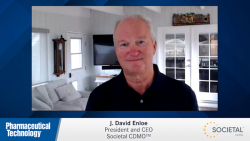
OR WAIT null SECS
- About Us
- Advertise
- Contact Us
- Editorial Info
- Editorial Advisory Board
- Do Not Sell My Personal Information
- Privacy Policy
- Terms and Conditions
© 2025 MJH Life Sciences™ , Pharmaceutical Technology - Pharma News and Development Insights. All rights reserved.
Opioid Formulation: Out with the Old
Endo Pharmaceuticals, maker of the opioid medication Opana ER (oxymorphone HCl), is suing FDA to prevent generic manufacturers from entering the market with formulations of oxymorphone that are not abuse-resistant.
Endo Pharmaceuticals, maker of the opioid medication Opana ER (oxymorphone HCl), is suing FDA to prevent generic manufacturers from entering the market with formulations of oxymorphone that are not abuse-resistant. Endo voluntarily withdrew its older formulation of Opana ER in March, 2012, and launched a crush-resistant version to replace it. According to Endo’s Nov. 30, 2012 press release , the lawsuit, filed in the US District Court for the District of Columbia, is based on the failure of the FDA to meet its legal obligation to determine in a timely manner whether the old formulation of Opana ER was withdrawn from the market for reasons of safety. If, as Endo claims, the reformulation was done for reasons of safety, then generic manufacturers will have to introduce products that reproduce the new formulation. Critics point out, however, that the reformulation was conveniently timed to coincide with Opana’s patent expiry, and might easily be construed as a tactic to delay entry of generic competition.
Health Canada recently approved generic opioids containing the old formulations, a move that was not well received by those concerned that the availability of low-cost generics would exacerbate the problem of prescription opioid abuse. However, according to a Nov. 19, 2012 press release from Health Canada, there is no basis in Canada’s Food and Drugs Act to withhold approval of a drug where the drug is otherwise considered safe and effective for its recommended use. The law does not permit approval to be withheld on the basis of misuse. Canada’s approval of those products has sparked concern that they may find their way over the border and into the US as street drugs, according to a report in the Wall Street Journal.
US regulators are operating under similar constraints as Canadian regulators, which makes for difficult policy. FDA recognizes that prescription opioid abuse is a serious public health problem, which the Agency has attempted to counter with a Risk Evaluation and Mitigation Strategy introduced in July 2012. On the other hand, inexpensive generics are beneficial to payers and to patients legitimately in need of pain medication. It’s hard to see which way FDA will go. Deterring prescription drug abuse is good public policy, but it may not be within FDA’s mandate to make that policy decision.


